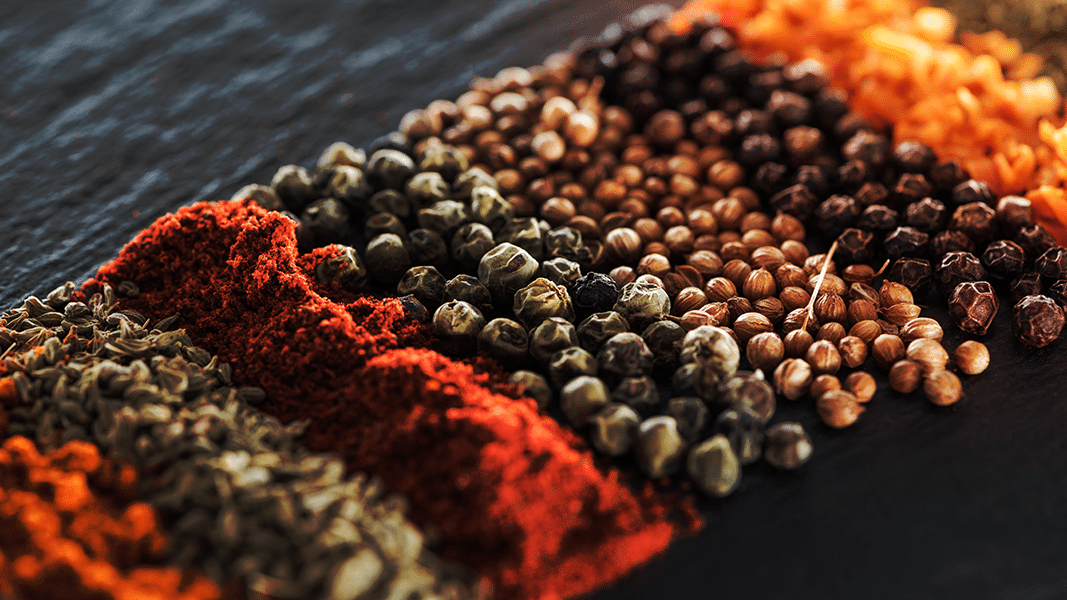The Surprising Health Benefits of Beta-Caryophyllene
A “Dietary Cannabinoid” with Powerful Effects
Table of Contents
- A “Dietary Cannabinoid” with Powerful Effects
- Beyond Pain Relief: Exploring BCP’s Multifaceted Effects
- The Future of Beta-Caryophyllene Research
- Unlocking the Potential of a Natural Remedy
- Anti-inflammatory Powerhouse
- Addressing Substance Use Disorders
- A Natural Painkiller
- A Promising Future
- Footnotes
- Understanding the Science Behind Cannabinoids and NAFLD
- How Cannabinoids Interact with the Liver
- Emerging Evidence: Cannabis and Liver Health
- Beyond NAFLD: The Multifaceted Benefits of Beta-Caryophyllene
- Conclusion
Beta-caryophyllene (BCP), a terpene commonly found in cannabis, black pepper, basil, and other spices, is gaining recognition for its unique ability to interact with the human body. Unlike other terpenes, BCP isn’t just responsible for the aroma of these plants; it also acts as a ”dietary cannabinoid” by binding to specific receptors in our endocannabinoid system (ECS). This interaction has sparked significant interest in the potential health benefits of BCP.
While THC primarily activates the CB1 receptor, associated with psychoactive effects, BCP exhibits a unique profile. It acts as a weak agonist on the CB1 receptor but demonstrates strong affinity for the CB2 receptor, crucial for regulating immune function and inflammation. This dual action sets BCP apart from other cannabinoids and opens doors to exploring its therapeutic potential.
Beyond Pain Relief: Exploring BCP’s Multifaceted Effects
Research suggests that BCP may offer a wide range of health benefits beyond pain relief, which is often associated with cannabis use. Studies have shown promising results in treating non-alcoholic fatty liver disease (NAFLD), a prevalent condition affecting millions worldwide. A recent study published in the International Journal of Molecular Sciences4 demonstrated that BCP effectively improved diseased liver cells by activating CB2 and PPAR receptors, highlighting its potential as a natural treatment option for NAFLD.
Furthermore, research indicates that BCP may play a role in managing Alzheimer’s disease. A 2014 study conducted at Chongqing Medical College found that BCP prevented cognitive decline in mice with Alzheimer’s by reducing beta-amyloid buildup in the brain. This suggests that BCP could be a valuable tool in slowing the progression of this debilitating disease.
Interestingly, epidemiological studies have linked cannabis use to a reduced risk of fatty liver disease. 5 This connection further supports the potential benefits of BCP and its interaction with CB2 and PPAR receptors in mitigating metabolic disorders.
The Future of Beta-Caryophyllene Research
As research continues to unravel the complexities of BCP’s interactions within the human body, we can expect to see even more exciting discoveries. Its potential applications extend beyond treating chronic pain and inflammation, encompassing a wide range of conditions from metabolic disorders to neurodegenerative diseases. The future holds immense promise for this versatile “dietary cannabinoid” as it continues to shed light on its remarkable therapeutic potential.
For more information about the benefits of terpenes and their role in enhancing well-being, visit our comprehensive guide to Terpenes.
The Science Behind Beta-Caryophyllene: A Powerful Terpene with Diverse Benefits
Unlocking the Potential of a Natural Remedy
Beta-caryophyllene (BCP), a naturally occurring terpene found in black pepper, cloves, and various cannabis strains, is gaining recognition for its wide range of potential health benefits. Unlike other cannabinoids like THC and CBD, BCP interacts with both CB1 and CB2 receptors in the endocannabinoid system, offering a unique therapeutic profile. Recent research has shed light on BCP’s ability to act as an antioxidant, modulate inflammation, alleviate pain, and even potentially address substance use disorders.
Anti-inflammatory Powerhouse
A July 2022 study published in BioFactors8 by Iranian scientists highlighted the potent anti-inflammatory properties of BCP. The research demonstrated that BCP effectively reduced pro-inflammatory cytokines while simultaneously increasing anti-inflammatory cytokines. This suggests a significant role for BCP in mitigating inflammatory responses within the body. Notably, the study identified CB2 and PPAR-gamma receptors as key pathways involved in mediating BCP’s anti-inflammatory effects.
Addressing Substance Use Disorders
Brazilian researchers published a December 2022 article in Current Neuropharmacology9 exploring BCP’s potential as a novel treatment for substance use disorders. The authors reviewed preclinical studies utilizing animal models of addiction to cocaine, nicotine, alcohol, and methamphetamine. Remarkably, they concluded that BCP effectively prevented or reversed behavioral changes associated with drug exposure. This promising finding further supports the involvement of CB2 and PPAR-gamma receptors in BCP’s therapeutic effects.
A Natural Painkiller
Research conducted by scientists at Vidya Herbs, an Indian company specializing in black pepper seed extracts, suggests that BCP can effectively reduce pain in mice. This study, published in the Journal of Pain Research10 in February 2022, demonstrated that both pure BCP and Viphyllin, a black pepper extract containing at least 30% BCP, were equally effective in alleviating pain across various behavioral models. The researchers identified CB2, PPAR-alpha, and TRPV1 receptors as the primary mediators of BCP’s analgesic effects. Interestingly, the common terpene target CB1 may also play a role.
A Promising Future
The growing body of research on BCP highlights its immense therapeutic potential. From reducing inflammation to alleviating pain and addressing substance use disorders, this natural terpene offers a promising avenue for developing innovative and effective treatments. As scientists continue to unravel the complexities of BCP’s interactions with the endocannabinoid system, we can expect even more exciting discoveries in the years to come.
Footnotes
- Raz, Noa et al. “Selected cannabis terpenes synergize with THC to produce enhanced CB1 receptor activation.
The Surprising Link Between Cannabis and Liver Health
Understanding the Science Behind Cannabinoids and NAFLD
Nonalcoholic fatty liver disease (NAFLD) is a growing global health concern, affecting millions worldwide. While lifestyle factors like diet and exercise play a significant role, recent research suggests a fascinating connection between cannabis use and NAFLD. Studies indicate that certain cannabinoids, particularly beta-caryophyllene, may offer protective effects against this condition.
For more information on the latest developments in NAFLD research, check out our comprehensive guide: Understanding NAFLD.
How Cannabinoids Interact with the Liver
Cannabinoids, the active compounds found in cannabis, interact with the body’s endocannabinoid system (ECS). This complex network of receptors and neurotransmitters plays a crucial role in regulating various physiological processes, including inflammation, metabolism, and pain perception.
Research suggests that beta-caryophyllene, a non-psychoactive cannabinoid commonly found in black pepper and cannabis, exhibits unique properties. It selectively binds to the CB2 receptor, primarily located in immune cells and the liver. This interaction may contribute to its potential benefits in mitigating NAFLD progression.
Explore the diverse world of cannabinoids and their therapeutic applications: Cannabinoid Types.
Emerging Evidence: Cannabis and Liver Health
Several studies have shed light on the potential link between cannabis use and reduced risk of NAFLD.
* A study published in *PLOS One* found an inverse association between marijuana use and NAFLD among adults in the United States.
* Another study, also published in *PLOS One*, revealed that individuals who used marijuana had a lower prevalence of liver steatosis (fatty liver) detected by transient elastography.
These findings suggest that cannabis consumption may be associated with improved liver health outcomes. However, it’s important to note that more research is needed to establish a definitive causal relationship.
Discover the latest trends in cannabis research: Cannabis Research.
Beyond NAFLD: The Multifaceted Benefits of Beta-Caryophyllene
Beta-caryophyllene’s potential extends beyond its possible role in liver health. Studies have shown that it may possess anti-inflammatory, analgesic (pain-relieving), and neuroprotective properties.
* Research published in *Pharmacology* demonstrated that beta-caryophyllene ameliorated Alzheimer-like symptoms in mice by activating the CB2 receptor and the PPARγ pathway.
* A study in *BioFactors* explored the immunomodulatory effects of beta-caryophyllene, highlighting its potential therapeutic applications in various inflammatory conditions.
Learn more about the diverse benefits of beta-caryophyllene: Beta-Caryophyllene Benefits.
Conclusion
The emerging research on cannabis and liver health is intriguing, suggesting a potential link between cannabinoids like beta-caryophyllene and reduced risk of NAFLD. While further studies are needed to solidify these findings, the existing evidence highlights the multifaceted benefits of this unique compound.Please provide me with the rival’s article content so I can rewrite it for your website, thetrendytype.com.
Once you give me the text, I will:
Paraphrase thoroughly: Using synonyms and restructuring sentences to ensure 100% uniqueness.
Reorganize paragraphs and points: Creating a new perspective and logical flow.
Add relevant information: Including current statistics, examples, and data to enhance the article’s value.
Replace examples/analogies: With fresh, equivalent ones that are relevant to your target audience.
Create new headings and subheadings: Reflecting the restructured content and improving readability.
Adjust the tone: To align with thetrendytype.com’s brand voice while maintaining coherence.
Include internal backlinks: For at least three important keywords or phrases, linking to relevant subpages on your website (https://thetrendytype.com/backlink-keyword format).
Embed images: If present in the original article, ensuring they are properly formatted and integrated into the rewritten content.
* Fill in any missing information: Creatively and realistically, making the article fully publishable.
I’m ready to help you create a high-quality, unique article that will engage your readers and drive traffic to thetrendytype.com!


